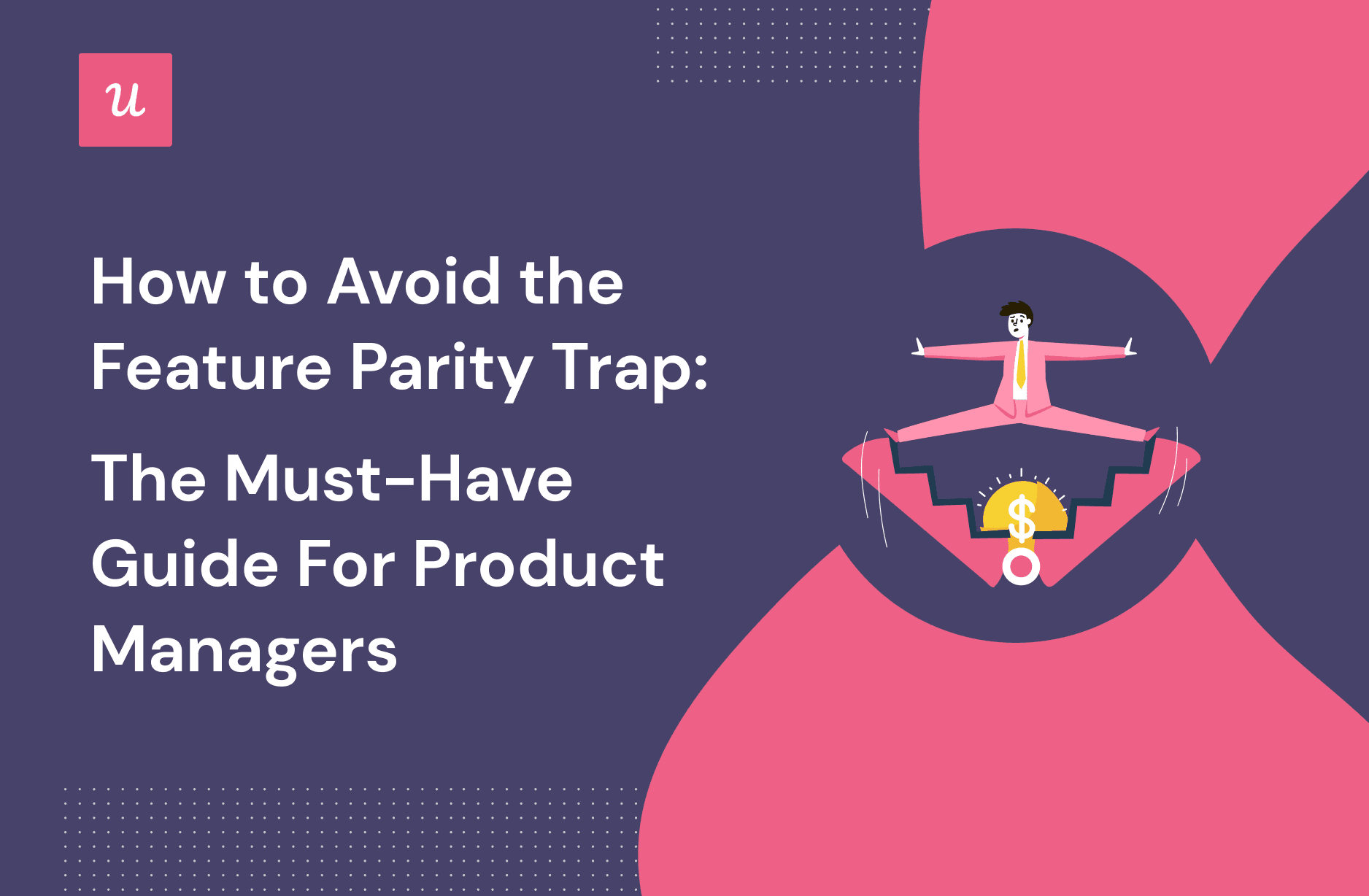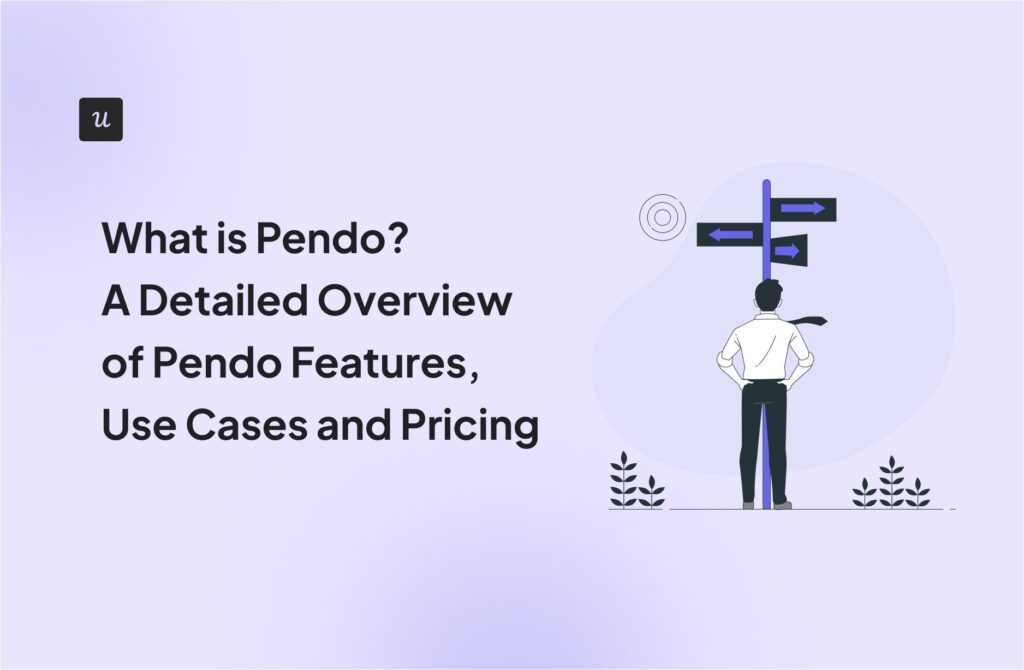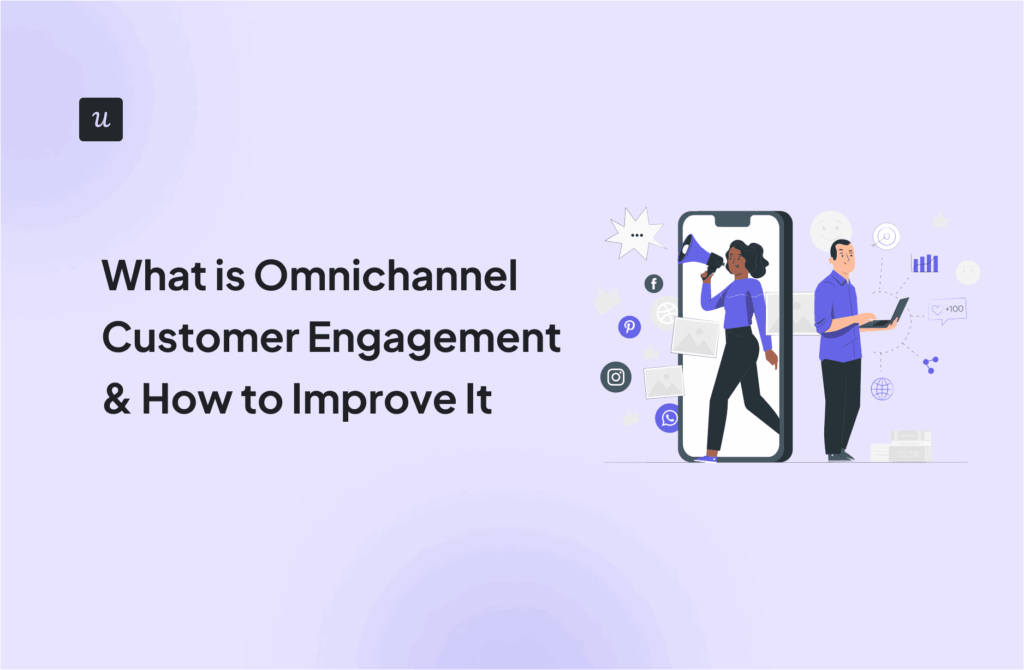
How to Avoid the Feature Parity Trap: The Must-Have Guide For Product Managers
What is the feature parity trap? How dangerous is it for product managers? What can you do to avoid it? If you need the answers, we’ve got you covered!
In the article, we discuss different kinds of feature parity, the dangers of trying to ensure feature parity without analyzing the evidence, and how not to fall into the trap. Interested? Let’s jump in!
Get The Insights!
The fastest way to learn about Product Growth, Management & Trends.
What is feature parity?
Feature parity aims to replicate all current product features and functionalities on a new platform.
This could be motivated by the need to upgrade the tech stack or enable users of different operating systems to use your product. In principle, it means that the customers using the new system can complete the same tasks as the users of the previous one.

Types of feature parity
There are three main contexts in which we talk about feature parity:
- parity with legacy systems
- parity across multiple platforms
- competitive feature parity
Complete feature parity with your legacy system
Feature parity with your legacy system involves enabling the users to perform the same tasks they have been performing so far in the new system you are building.
Let’s imagine you have been using a product, such as a cloud service or an e-commerce solution for a few years. As your business grows, you realize the existing system doesn’t cope with the increased demand and you need more capabilities.
When you migrate to the new solution and you retain the features and functionalities of the old system, you have achieved feature parity with the legacy system.
Feature parity across multiple platforms
To achieve feature parity across platforms, you need to make sure that your users using different operating systems have access to the same features and functionalities.
Many digital products are originally developed for one OS and only then for others. For example, WhatsApp was first built for iOS and became available for Android users only a few months later.
When the app becomes available on the new platform, it often has limited capability compared to the original one.
For example, Instagram only allowed its users to upload photos on their mobile apps. The web app didn’t have the functionality for many years and the users could only enjoy the uploads in this way.

Competitive feature parity
Competitive feature parity is driven by the need to match your competitors’ offerings.
In this case, the features you develop are not determined by the needs of your existing user base but rather the desire to eliminate the competitive advantage of your business rivals. This often happens under the pressure of senior management.

Why feature parity can lead you on the wrong path
Redesigning your product or moving it to a different platform comes with a lot of opportunities. However, you can easily cancel the new opportunities if you yield to the internal or external pressure to replicate all of the functionalities of the product.
Many product managers or product owners feel they need to offer the same features as competitors. They may also be afraid of angering the existing users who are used to certain functionality.
As a result, they often forget that the objective is to build a superior product that brings more value to customers and better solves their pains. Instead of innovating the product, they simply copy what’s already around, and that also includes the mistakes.
This is what we call the feature parity trap.
How can product managers avoid the feature parity trap when rebuilding a product?
Rebuilding the product for another system should be seen as starting from scratch. That involves a fair bit of product discovery to ensure that you build a product that makes your customers’ lives easier, which sometimes also means sunsetting features.
Do your users need a particular feature?
To decide if the users need a specific feature, look at their feedback.
Analyzing user feedback will help you identify the main user needs. Once you have a clear picture of the user requirements, look for the best way to meet them.
You might as well discover that the feature in question is indeed the best solution to their pain points. However, there might often be better ways of addressing the needs.

Is data telling you to build the same features?
Another step is looking at the product usage data.
Features tagging in tools like Userpilot allows you to track their usage.

Even if users say they like and need a particular feature, the usage data can reveal a different picture. If users don’t use the feature, it probably means that they don’t need it to reach their goal and it doesn’t add any value.
In such a case, there is no point in wasting resources on building the feature in the new version of the product.
How can product managers avoid the feature parity trap when expanding to new platforms?
When managing the expansion to new platforms, the product manager needs to decide not only which features to develop but also in what sequence.
Do users need all features on all platforms?
Although this may seem counterintuitive, users of different platforms may not necessarily need the same features.
Let’s have a look at MyFitnessPal as a good example.

While the mobile app allows you to scan the QR codes of products to upload them to your log easily, you don’t have that functionality in the web app. It’s probably because it would be a bit awkward to use your computer webcam for that.
What does your minimum viable product (MVP) need?
Even if you narrow down the list of the original features considerably, you may not be able to release them all at once. More likely, you will need a few iterations to develop the full capability.
That’s why you will need to prioritize the features that you develop first to create the MVP.
What your MVP will look like depends on your market research and your customer needs. The idea is to deploy basic functionality and start delivering value to the customers.
Once your MVP is out, you will be able to collect feedback from your users and use it to identify new features to develop.
For example, with mobile features, you can customize and launch in-app surveys of different types to gain crucial insights directly from your mobile app users, helping inform your roadmap.
How can product managers avoid the feature parity trap in a competitive market?
As a product manager, you may be under the pressure from business leaders to match the features that your competitors offer.
However, simply copying the functionalities that your rivals have is never the best way to gain a competitive edge. Why?
Because all you will be able to offer to your customers is a copy of what they are already using. That’s hardly ever enough to convince customers to go through the hassle and the expense of switching to another product.
What are your user’s jobs to be done?
Instead of blindly trying the keep up with your rivals in the feature development race, go back to the basics and look at your customers’ needs and the goals they want to achieve. Then find innovative ways to solve their problems better than your rivals.
Welcome screens are a good way of collecting data on how they are going to use your product. You can use the information not only to segment your users for onboarding purposes but also to inform the decisions on future development.

What value is your product meant to deliver?
The fact that your competitors offer certain features, doesn’t mean that they deliver value to their customers.
Before you decide to commit your resources to develop a feature that your competitors offer, reflect on the value it will bring to your customers.
If you’ve been in the product world for a bit, you must know the 80/20 Pareto rule. 80% of the value comes from 20% of the functionality. Many features – about 45% – never get used.
It is your job to identify the 20% of features that are most valuable to your customers. If a feature released by the competitors is in that group, then fair enough, go for it. If not, though, focus on identifying other ways to generate more value.
What business outcomes do you want to achieve?
As a product manager, you should never commit to delivering the same features and functionalities as your competitors without seeing how they help you achieve your business objectives.
When prioritizing the features to develop, make sure you never lose sight of your North Star metric.

How can you ensure the alignment of functionality development with your product strategy while constantly delivering value?
Opportunity Solution Trees can be the answer. Developed by the product discovery guru Teresa Torres, the tree consists of 4 main levels: business objective, opportunities (user pain points), solutions, and experiments to test their effectiveness.

The key is to work your way down from the top of the tree without skipping any stages.
Have you tested the need for potential new features?
Before you rush to develop a feature that your competitor has just released, wait and think about how to test the demand for the feature with your customer base. This will help you decide if your customers need it or will use it.
How can you do that?
Fake door testing could be an effective way of testing the interest in a feature before it’s even built.
How does it work?
Let’s have a look at the hypothetical example from Asana that we’ve created with Userpilot.
The tooltip on the left draws the attention of the user to a new feature.

The catch is, however, that the new feature doesn’t exist. When the users click on the link, they discover that the feature is not available yet.

Tracking how many users click on the feature and how many would be interested in the feature helps you to decide whether the feature is worth developing.
It is a powerful tool but you need to use it sparingly. Otherwise, you risk disappointing your users and undermining your credibility.
Conclusion
It’s very easy to fall into the feature parity trap if your decisions are based on subjective criteria rather than robust empirical data.
If you would like to learn how Userpilot can help you use user data to make informed decisions on feature development, click the link to get a demo!






